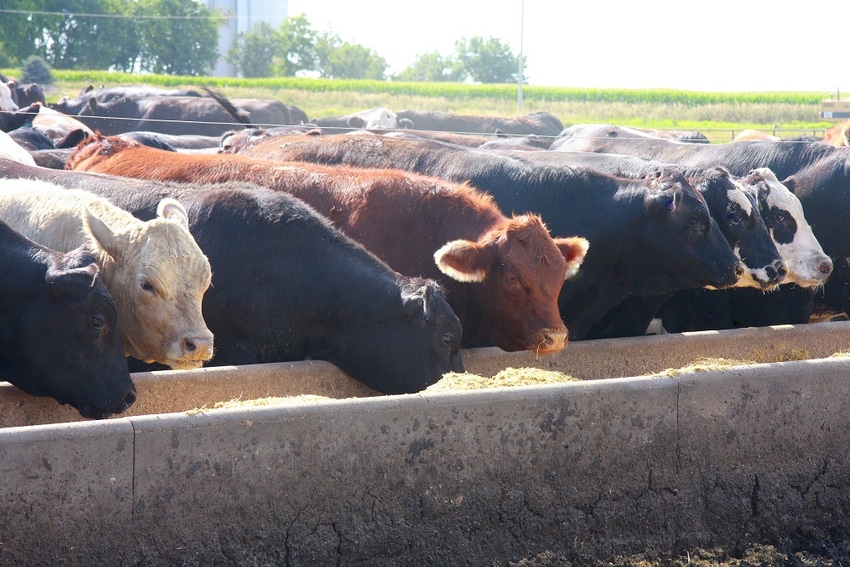Zinc supplement for feeder rations gets many recommendations. Here's a new study showing what you really need.

A recent research trial suggests there is an upper limit for zinc supplementation to maximize feed efficiency, despite widely varying recommendations.
The requirement for zinc in finishing cattle diets has been established at 30 ppm, says Britt Hicks, area extension livestock specialist for Oklahoma State University. Yet a 2007 survey of consulting feedlot nutritionists showed these nutritionists recommend total dietary zinc levels ranging from 40 to 212.5 ppm, with a mean recommendation of about 93.
Then, a 2016 survey of consulting feedlot nutritionists showed these nutritionists recommend added zinc levels (rather than total zinc) ranging from 34 to 130 ppm, with a mean recommendation of about 87 ppm.
Since most feedstuffs typically used in feedlot rations contain 25 to 35 ppm zinc, these 2016 survey results suggest that the total dietary zinc level recommended by consulting nutritionists has increased by about 30 ppm since the 2007 survey.
Recent Kansas State University research evaluated the effects of feeding different levels of zinc on feedlot performance and carcass traits of finishing heifers.
In this experiment, 480 crossbred heifers with 849-pound initial weight were assigned to one of four treatments fed 144 days. Heifers received either 0, 30, 60, or 90 ppm of supplemental zinc from zinc sulfate. The control diet of 0 ppm contained approximately 32 ppm of zinc from feedstuffs, which would meet the suggested zinc requirement of 30 ppm. That means the 30, 60, and 90 ppm supplemental zinc treatments contained, respectively, 62, 92, and 122 ppm total zinc.
Zinc supplementation tended to linearly decrease dry matter intake (DMI) as zinc concentration of the diet increased, resulting in a linear improvement in feed efficiency, with the greatest improvement occurring in cattle fed 60 ppm of supplemental zinc, Hicks noted recently in a literature review.
Cattle receiving supplemental zinc were 3.8% more efficient than cattle receiving no supplemental zinc, gaining 5.86 versus 6.09 pounds of feed per pound of gain.
Hicks noted that the 1976 Beef NRC suggested a zinc requirement of 20 to 30 ppm zinc. The 1984, 1996, and 2016 Beef NRCs all recommend 30 ppm.
Many feedlot nutritionists use a combination of zinc sulfate and an organic zinc source, Hicks says.
"I have always recommended that the zinc requirement be met 100% using added zinc," he says. "Adding additional zinc sulfate to a ration virtually has no effect on total ration cost. Zinc sulfate is about 36% zinc. It only takes about 0.16 lb/ton of zinc sulfate to get 30 ppm added zinc in ration. Hence, one feeds more zinc as sort of an insurance policy. The maximum tolerable concentration of zinc suggested in the 2016 NRC is 500 ppm."
You might also like:
9 new pickups for the ranch in 2016
About the Author(s)
You May Also Like



